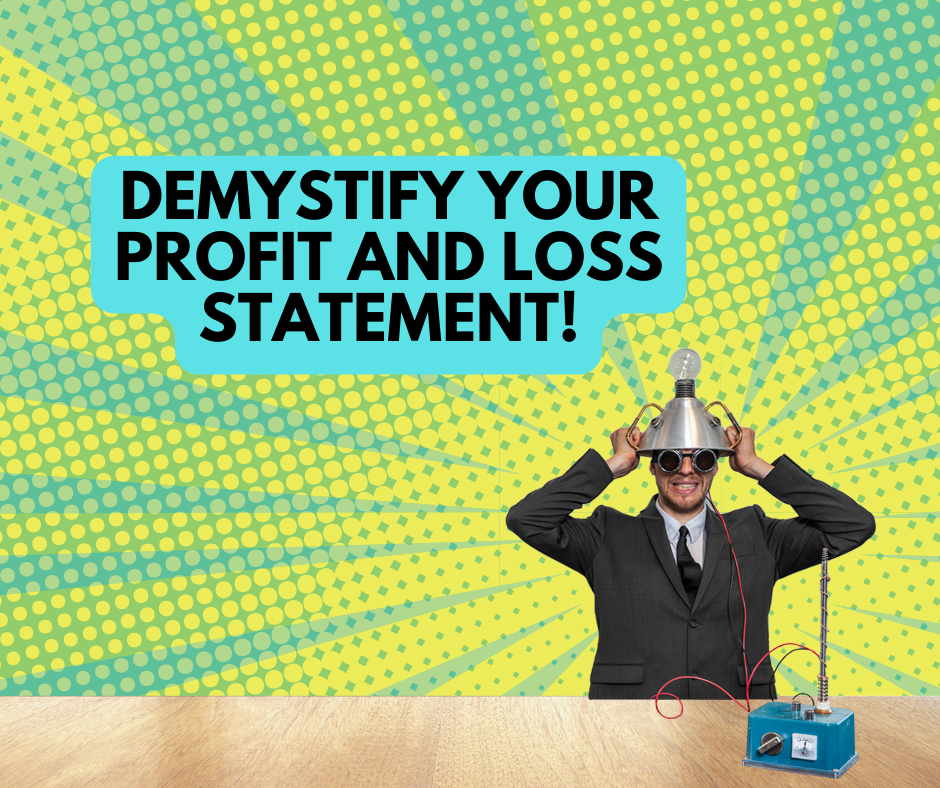Cracking the code: Demystifying your Profit and Loss statement

Are you someone who cringes at the thought of financial statements and accounting jargon? Do words like P&L, balance sheet, and cash flow make you want to run for the hills? Fear not, my friend! While they may sound intimidating, understanding these financial statements can actually be pretty simple and useful. For today’s blog, let’s talk about the Profit and Loss Statement.
Have you ever been curious about how businesses manage their finances and keep track of their success? Well, wonder no more! One of the most essential tools used by businesses is the Profit and Loss (P&L) statement. This financial statement provides a comprehensive overview of a company's revenues and expenses over a specific period, and it plays a crucial role in helping business owners make informed decisions about their operations.
So, what exactly is a P&L statement, and how does it work? The P&L statement is divided into two primary sections: revenue and expenses. Revenue represents the money a company earns from selling its products or services, while expenses are the costs the company incurs to produce and sell those products or services. In simpler terms, revenue is the money coming in, and expenses are the money going out.
But the P&L statement is more than just a simple list of numbers. It provides valuable insights into a company's financial health, such as its profitability and potential for growth. By analysing the revenue and expense data, business owners can identify areas where they need to cut costs or invest more resources.
Understanding how to use and read a P&L statement is essential for anyone involved in business management, from CEOs to small business owners.
It allows them to make strategic decisions based on actual financial data, rather than relying on assumptions or guesswork.
Reading the Profit and Loss Statement
The numbers and terms can be confusing, but understanding how to read and analyse them is crucial to a successful business.
Don't worry, we won't leave you in the dark when it comes to interpreting financial statements. In fact, we're here to help you gain a better understanding of a company's financial performance by breaking down the intricacies of the P&L statement. So, sit tight, and let’s get into it!
Here’s a breakdown of the steps to read and analyse a P&L Statement:
1. Understand the structure:
As mentioned earlier, a P&L statement is divided into two main sections - revenue and expenses. Revenue is typically listed at the top of the statement, followed by the expenses. The difference between the revenue and expenses is the net income or net loss for the period.
2. Analyse the revenue:
Look at the revenue section of the P&L statement to see where the company is generating its income. Is it from selling products, providing services, or a combination of both? By understanding this information, you would be able to make informed decisions regarding your products or services. For example, if a certain product line isn't performing well, then you may want to discontinue it to focus on more profitable offerings.
You can also analyse the revenue by comparing it to previous periods or industry benchmarks to see how the company is performing and identify trends or areas of improvement.
3. Examine the cost of goods sold (COGS):
The COGS is the direct cost associated with producing and delivering a company's products or services. It includes the cost of materials, labour, and any other expenses directly tied to the production process.
Analysing the COGS can help you understand the company's gross profit margin, which is the amount of profit the company makes after deducting the COGS from the revenue.
4. Review the operating expenses:
Operating expenses are the costs associated with running the business that aren't directly tied to producing the products or services. These can include salaries, rent, marketing expenses, and more.
Analysing the operating expenses can give you insight into how efficiently the company is managing its costs. If expenses have been steadily increasing, you may want to evaluate whether you need to cut costs or increase revenue to improve financial performance.
5. Calculate the net income or net loss:
Finally, look at the bottom line of the P&L statement to see the net income or net loss for the period. If the company has a net income, it means it made a profit for the period. If it has a net loss, it means it spent more than it earned.
In conclusion, the Profit and Loss (P&L) Statement is a crucial tool for businesses to measure financial performance. By understanding the key components of a P&L statement and knowing how to interpret the numbers, business owners and investors can make informed decisions about operations and investments. With practice and a bit of patience, anyone can become proficient at reading and analysing a P&L statement, giving them the confidence to navigate the world of finance. So, don't shy away from the numbers and embrace the power of the P&L statement in your quest for financial success!
It's important to note that the P&L statement is just one of the financial statements that businesses use to measure their success. In the next blog, we'll dive into another important financial statement: the balance sheet.
If you need help reading your financial statements, or with any other aspect of your business, get in touch with us at Business Enterprise Centre Northern Territory. Whether you're in Alice Springs, Jabiru, Nhulunbuy or Tennant Creek, we're here to help! Give us a ring on (08) 8923 6100 and speak to one of our experienced business mentors.



